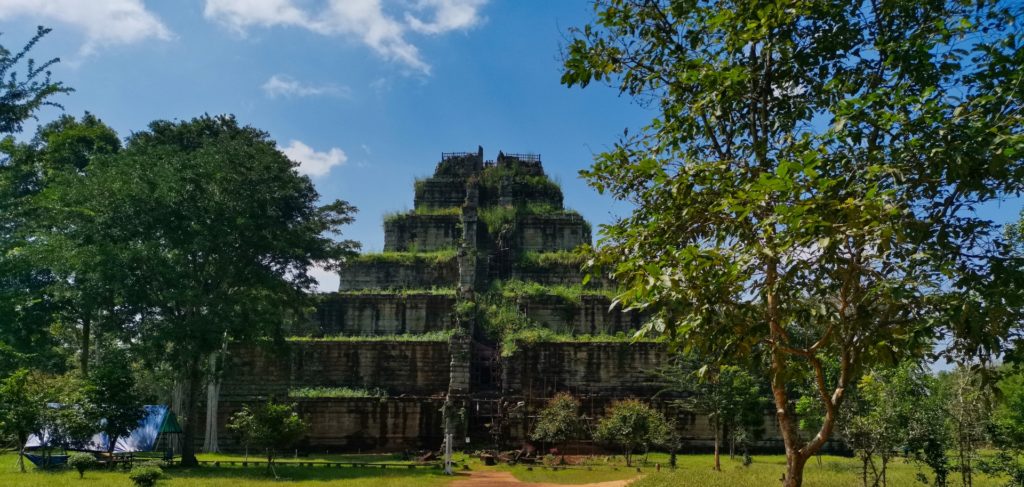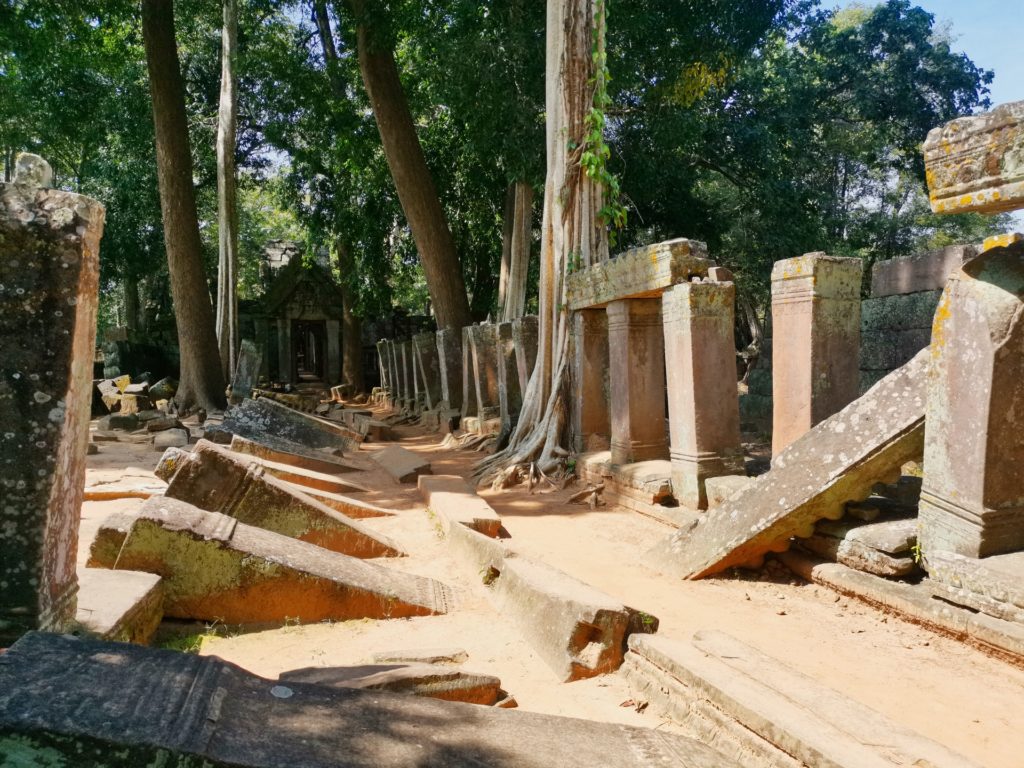Koh Ker – a huge pyramid temple in Cambodia
Koh Ker is a town in the north of Cambodia and is located about 120 kilometers from Siem Reap and Angkor. The whole area around Koh Ker is about 81 square kilometers. The city is one of the largest archaeologically relevant areas for the study of the Khmer Empire. So far, about 180 shrines have already been discovered there and chronologically classified in their use and historical significance.

The breathtaking Koh Ker Temple in the Kingdom of Wonders
The city, whose original names “Lingapura” (the city of lingas) and “Chok Gargyar” (the city of splendor) still indicate its grandeur and importance in ancient times, was first mentioned in ancient inscriptions in the 10th century. During the reign of King Jayavarman IV and King Harshavarman II, it was even the capital of the entire Khmer Empire for 16 years. Due to the great importance that the site had for the empire, there were also many construction projects – one of the reasons why there is so much for archaeology to discover there today. The architectural style of the region today is also known as the “Koh Ker style”.

View from Koh Ker Temple of the surrounding jungle
The city and its land areas have been used as a site for Hindu rituals and ceremonies since before it was elevated to the status of capital city. King Jayavarman IV, for example, was deeply impressed by the deity Shiva, as evidenced by numerous inscriptions and buildings in Koh Ker. In contrast to the younger cities of the Khmer Empire, the change of the state religion from Hinduism to Buddhism was no longer visible here through new buildings, because this swing happened already after the time of Koh Ker as capital and only sporadically new building projects were implemented (which was probably also due to the fact that the city was located quite far away from the new capitals): This is very significant, especially from a cultural studies perspective, since the original, purely Hindu representations are still completely preserved.
Koh Ker was rediscovered in the 19th century during a French exploration tour, which had the consequence that in the course of the following decades or centuries many art treasures were looted and brought to Europe, especially to France, where this looted art is still exhibited in museums for interested people.
Of the numerous monuments located on the Koh Ker area, not all are currently open to visitors. The largest structure on the site is the former water reservoir, the Baray Rahal, which, however, no longer feeds water. What is particularly interesting about it is that this is not exactly aligned with the cardinal points, as was often the case with large structures in the Khmer Empire. The entire complex can be roughly divided into three areas: the monuments around the circuit, the monuments along the access road (which at the time when Koh Ker was the capital of the Khmer Empire was considered one of the most strategically important road links of the empire) and the buildings around the double sanctuary of Prasat Thom (the red tower) and Prang (the step pyramid). What is particularly interesting about the latter two is that the large temple complex is arranged in a linear fashion – and not concentrically, as was usually the case with temple buildings in the Khmer period.
Travel video of Koh Ker
Today, the town is a popular destination for tourists, meanwhile the site is well and easily accessible to visitors through a road built in 2011, and also accessible year-round (although, as mentioned above, not all structures are open to visitors). As the Koh Ker region and the forests surrounding the town are still heavily mined in parts (despite numerous efforts by the authorities to secure the areas step by step), it is advisable to explore the area only with an experienced guide and not to leave the marked trails.
Visitors should allow about two to three hours to visit Koh Ker in order to explore the various structures and actually take in the special nature of the place.

The path leads through an offshore temple complex that initially blocks the view of Koh Ker